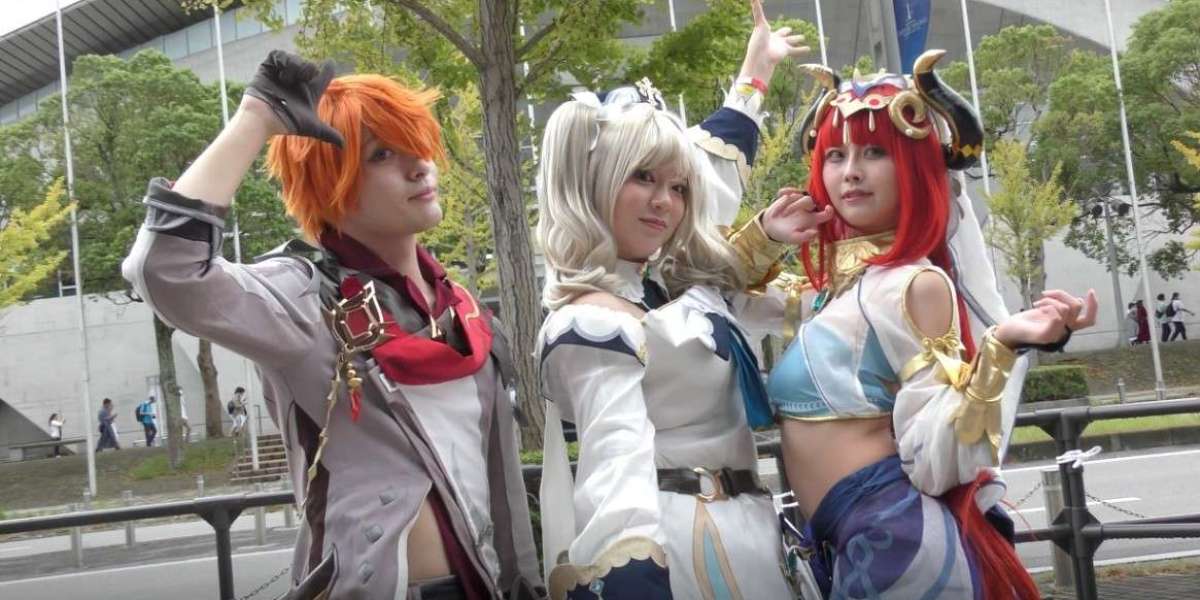Cosplay Series: Celebrating the Art of Transformation and Fandom
From the elaborate armor of video game warriors to the intricate gowns of anime princesses, cosplay has become one of the most vibrant, expressive forms of fan art and self-expression in modern pop culture. Short for “costume play,” cosplay is more than just dressing up—it’s a creative performance art, a tribute to beloved characters, and a powerful community that brings fiction into vivid reality.
In this Cosplay Series, we explore the multifaceted world of cosplay: its origins, evolution, cultural impact, craftsmanship, and the passionate people who bring their favorite characters to life.
What Is Cosplay?
Cosplay is the practice of dressing as a character from a movie, TV show, comic book, anime, manga, video game, or even original creations. But unlike Halloween costumes, cosplay often involves deep character accuracy, handcrafted designs, and roleplay elements, where cosplayers not only wear a character’s outfit but also embody their persona.
It’s common at fan conventions (like Comic-Con, Anime Expo, or Gamescom), but also thrives online—on platforms like Instagram, TikTok, and YouTube—where creators show off their work, transformations, and performances.
The Origins of Cosplay
While costuming at fan events has existed for nearly a century, the term “cosplay” was coined in Japan in the 1980s by Nobuyuki Takahashi after witnessing elaborate fan costumes at WorldCon in Los Angeles. He blended the words “costume” and “play” to describe what he saw as a unique form of expression.
From there, cosplay culture flourished in Japan’s otaku communities, then rapidly expanded to the U.S., Europe, and worldwide, becoming a staple of fan conventions and online fandoms.
Why Cosplay?
1. Creative Expression
Cosplay allows fans to showcase artistic talents across multiple disciplines—sewing, armor crafting, makeup, wig styling, 3D printing, prop building, and performance. Many cosplayers are self-taught artists who spend months perfecting a single outfit.
2. Connection to Fandom
Dressing up as a beloved character creates a deep, emotional connection to that fandom. It’s a way of saying: “This story meant something to me, and I want to share it with others.”
3. Community and Recognition
Cosplay brings together people with shared interests. Whether online or at conventions, it’s a chance to meet fellow fans, gain appreciation for your work, and form lasting friendships or collaborations.
4. Empowerment
Stepping into the role of a powerful warrior, elegant mage, or iconic hero can be a confidence-boosting experience, especially for those who struggle with self-image or social anxiety. For many, cosplay is transformative—physically and emotionally.
What to Expect in the Cosplay Series
This series is dedicated to exploring the world of cosplay in-depth, showcasing the diversity, artistry, and voices behind it. Here’s what’s in store:
1. Cosplayer Spotlights
Interviews and features on talented cosplayers from around the world—covering their journey, techniques, challenges, and inspirations.
2. Behind the Craft
Step-by-step looks into how iconic costumes are made. From foam armor builds to LED-lit props and seamless makeup techniques, we’ll dive into the details of what it takes to bring a character to life.
3. Cosplay Themes
Explore cosplay categories by fandom or genre:
Anime & Manga (e.g., Naruto, Demon Slayer, One Piece)
Gaming (e.g., Final Fantasy, Genshin Impact, Halo)
Comics & Superheroes (e.g., Marvel, DC, The Boys)
Movies & TV (e.g., Star Wars, Harry Potter, Stranger Things)
Historical/Fantasy Crossovers and Original Designs
4. Convention Culture
A guide to navigating cosplay at fan conventions:
Planning your con debut
Competing in cosplay contests
Managing con crunch and burnout
Photography tips and etiquette
5. Inclusivity and Identity in Cosplay
Cosplay is for everybody—regardless of race, gender, body type, or ability. We'll explore how the community is evolving to be more inclusive, tackle common myths (e.g., "You can only cosplay your race"), and share stories from underrepresented voices.
6. Cosplay and Social Media
Discover how platforms like Instagram, TikTok, and Patreon are changing the cosplay landscape—making it easier to build a fanbase, earn income, and connect with audiences worldwide.
Challenges Cosplayers Face
Cosplay is rewarding but comes with its own set of challenges:
Time & Cost: Some high-level builds can take months and cost hundreds (or thousands) of dollars.
Gatekeeping: Sadly, some parts of the community can be unwelcoming or overly critical, especially toward BIPOC, plus-size, or beginner cosplayers.
Burnout: Con preparation, social media pressure, and competition can lead to fatigue or anxiety.
This series aims to support, uplift, and educate, offering tips and real talk on how to overcome these challenges.
Cosplay Is for Everyone
Whether you’re a beginner making your first costume from thrifted fabric, or a seasoned builder crafting full-body armor with airbrush detailing, cosplay is about passion—not perfection. It’s about honoring the characters we love, finding our people, and expressing ourselves in ways that words alone can’t capture.
Final Thoughts: Let the Transformation Begin
The Cosplay Series is more than just a celebration of cool costumes—it's a deep dive into the creativity, community, and courage it takes to step into someone else's shoes, even if just for a day.
So whether you're here for inspiration, education, or pure admiration, join us on this journey into the world of cosplay—where fantasy becomes reality, and anyone can be the hero of their own story.














